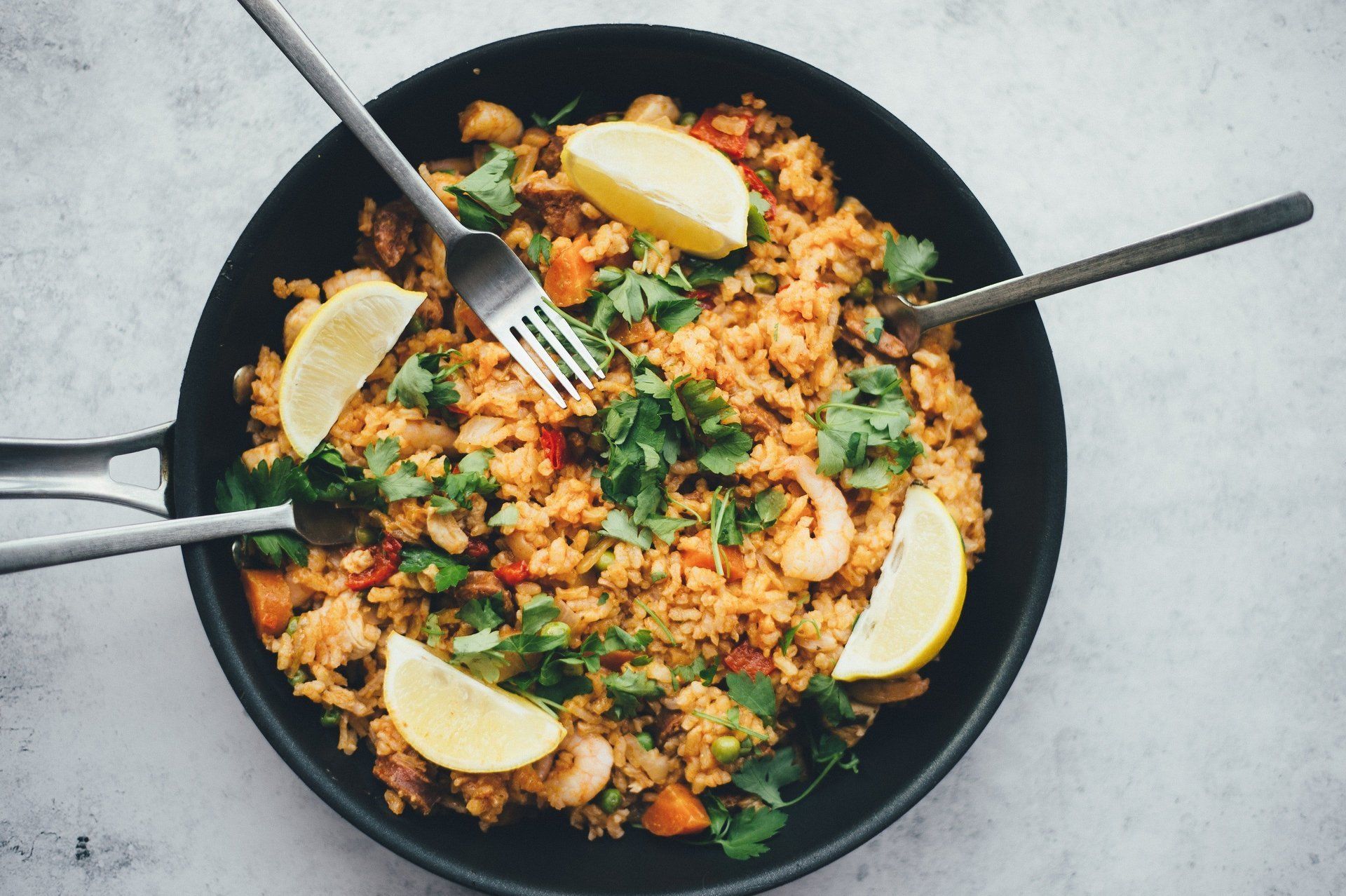ESSAY: Mixed rice
Mixed rice
I was never one to mix food on my plate.
Back to Essays
I’ve always liked to keep viands separate from each other as much as possible. Rice usually stays at the bottom end of my plate, meat or seafood on the top left, and vegetables on the top right. Soup always has to be in a bowl. For certain dishes that require a bit of gravy, I pour just enough to keep it neatly on the meat without it avalanching onto the other items.
This is why I adore those baby plates with built-in dividers, and would probably use them as everyday tableware if they didn’t come in Sesame Street designs most of the time.
When I moved to Malaysia, I had to quickly get used to a popular dining concept called “mixed rice,” where a food vendor asks you to choose from a wide array of dishes in front of you and then dumps them all on your plate, right on top of each other. One can only imagine the horror I felt upon experiencing this for the first time, especially after seeing my food amalgamate into one heaping glob. I stared at the vendor in disbelief. Why not just mix everything in a blender and let me drink the goddamn slush in one gulp? Throw in one of those thick straws while you’re at it, you son of a bitch!
“They all end up together in your stomach anyway, so what’s the big deal?” a friend once asked when he saw me trying to keep my string beans as far away as I could from my fried chicken, as if strategically delineating national territories on my plate for fear of possible political conflict.
I never have any retort to this every time someone asks. And it’s not like I don’t end up eating certain dishes that go well together in one spoonful, anyway. I just don’t like food mixing on my plate, the same way I don’t like my black socks cavorting with my brown socks in my drawer if I can help it. Some things just need to stay separated from each other.
I’ve always had this obsessive-compulsive urge to organize everything into categories—a coping mechanism I’ve carried through life to help make sense of the world around me. No matter how confusing the world got out there, as long as my clothes hung tidily in the closet, or my books sat nicely on the shelves, everything was going to be just fine.
Arm me with some boxes and labeling tools, and I’ll go nuts storing things in their proper places. Like an alcoholic in a liquor store, I drool over filing boxes and storage containers stacked in all shapes and sizes every time I enter an office depot. “So many boxes, so little time!” I always say, while imagining what sort of things I could keep in them.
Naturally, the other end of the spectrum usually leaves me quite unsettled, when things aren’t in their designated place. “Oh my God! This paper clip isn’t in its box where it’s supposed to be! What the hell is the world coming to?” is something not very far from what I would probably say during such tumultuous times.
This obsessive need to always keep things neat and orderly has manifested in other aspects of my life through the years. As a child, I didn’t want to see the slightest crinkle on my bed, and would yell at anyone who would even dare sit on it. I even remember asking my father one night to carry and lay me carefully in the middle of my bed like a dead person so that I don’t end up wrinkling my own sheets. I had my blanket tucked so tightly under me I looked like a cross between a mummy and a mermaid. I then laid there like a corpse the whole night, not moving an inch. Dracula would've been so proud of me.
Growing up in a household that didn’t quite share the same passion for tidiness as I had, made me believe I had a divine mission to save my family from being eaten alive by their own mess. There have been countless times I would wake up in the morning to see our househelp searching for something I may have routinely kept somewhere.
“Paolo, have you seen your mother’s car keys? She’s been looking for it and wants us to find it,” our househelp would ask me.
To this, I would sarcastically reply, “I’m not sure. If you’re looking for keys, then perhaps you might want to try the key rack labeled keys?” You would think the key rack itself
would've done the trick.
And it’s been this way as far as I can remember—people in the house asking me where things are kept, like I’m a walking card catalogue of missing items like sunglasses, bills, receipts, and sometimes even our small dog. “Yes, I kept the dog in the top drawer marked dog,” I could imagine myself explaining.
Even when I moved to Malaysia, I would sometimes get email from my mother, asking me where I kept the inflatable Halloween pumpkin decorations, or how many of those silver Christmas tree trimmings were used last year and why one set seems to be missing.
How difficult is it? Stationeries go in the stationeries drawer, toiletries go in the toiletries cabinet, and cars go in the garage, unless someone stole them. It’s quite elementary, really.
I’ve come to understand, though, that not all brains are hardwired the same way as mine, so in recent years I’ve slowly learned to curb this obsessive need to categorize everything according to shape, size, and function.
This is probably why I was caught off-guard one day when I was required to categorize myself into one of four boxes: Malay, Chinese, Indian, or Others. It was for a cellular service provider application form in Malaysia—yes, the country of mixed rice.
Like the many knick-knacks I’ve neatly arranged in labeled containers all my life, there I was being asked to categorize myself into a box of my own.
I soon learned that this classification went far beyond application forms and spilled over from these four little boxes into everyday life.
“Are you mixed?” is a pointed question I had to quickly get used to (among others) here in Malaysia. That question is usually followed by, “Are you Malay or Chinese? You can’t be pure Malay because you’re fair-skinned, but you can’t be pure Chinese because you’re not fair enough.” And because I can’t seem to be enough of anything, this is frequently concluded with, “So you must be Chindian (a local term for people of mixed Chinese-Indian parentage).”
And just like that, my box is conveniently ticked for me.
Being in a country where many distinct races live side by side, I surmised that some locals must've seen the need to take people in context as a way of making sense of the world around them, the same way I did as a child when everything seemed too confusing. And much like a Sesame Street plate, a built-in divider somehow had to be drawn somewhere—hardly visible in certain aspects of society, but deeply ingrained in some.
One time, while enjoying a plate of mixed rice, a Chinese lady handed me a flyer with Chinese characters written all over it. It only had one English sentence that read: Learn to speak English fluently. I smiled at her and said, “I would rather learn Yiddish.”
Many times, I feel as if people walk around with labeled boxes over their heads to clearly identify their predispositions and how they should be treated. And many times, we do treat people according to how we think their box is labeled. This is not unique to Malaysia, of course. In many other parts of the world, people are seen not for who they are, but for what they represent.
Recently, a colleague noticed I made the mistake of wearing black and brown socks at the same time and politely asked, “Are you color-blind?” I laughed, wondering how this happened, but remembered how
I’m now able to keep all my socks mixed together in one drawer. So I simply said, “Yes. You can say I am.”

